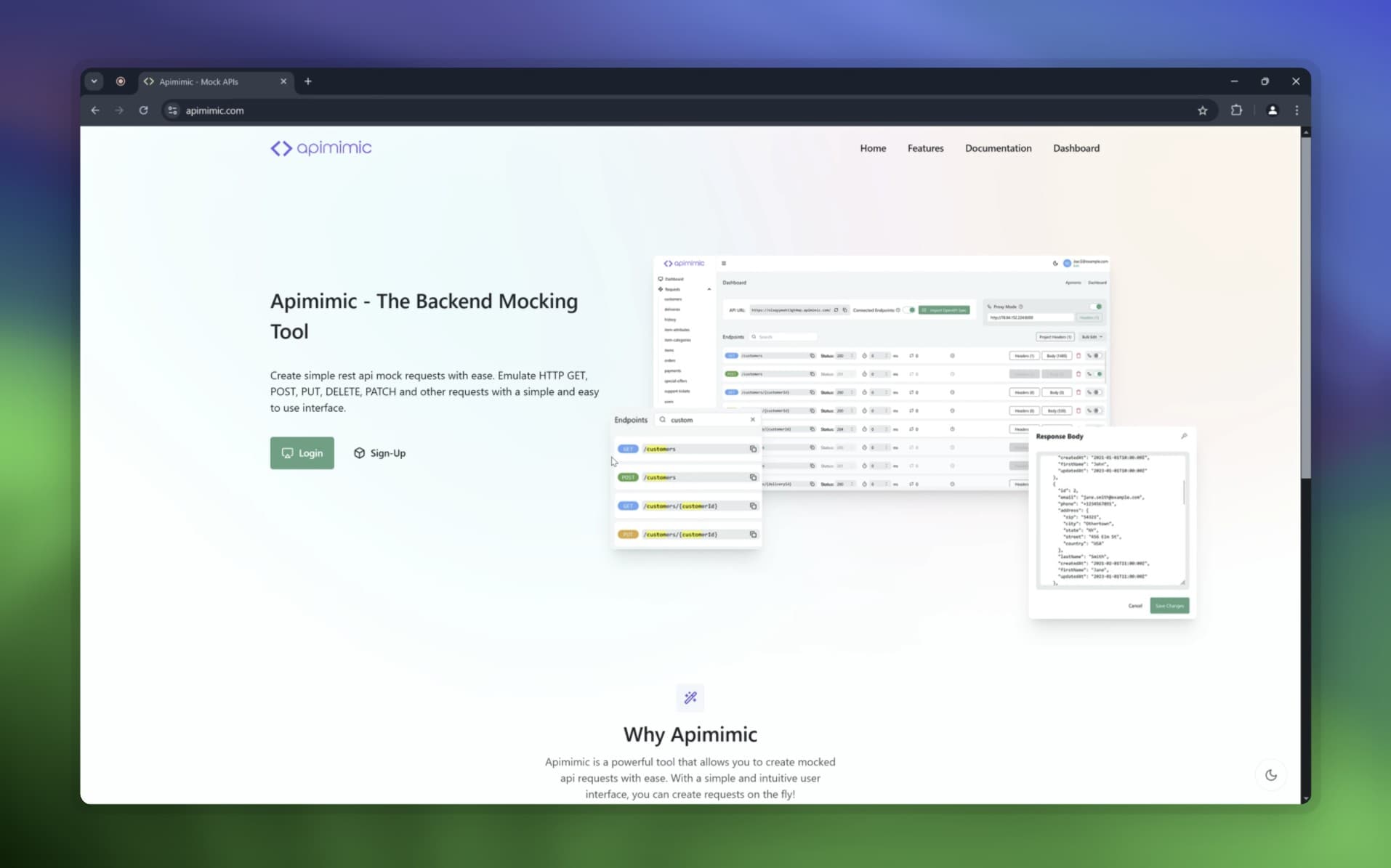Why Apimimic was created
Discover how Apimimic was born from a frontend developer's need for simpler API mocking. Learn about the journey from idea to solution, and how it helps speed up frontend development.
By Raivis Studens

Over the past few years working as a frontend developer, I've repeatedly encountered a familiar roadblock: waiting for the backend portion of projects to be completed before making meaningful progress on the frontend. While mocking api responses in the code is possible, it often proves cumbersome and inefficient.
In the traditional development workflow, frontend developers can find themselves blocked by API dependencies. Need to test loading states? You'll have to simulate slow response times. Want to verify error handling? You'll need to generate various HTTP status codes. Testing different data scenarios? You'll have to modify API responses manually. And there's no denying that development accelerates when working with functional API endpoints. These precise challenges motivated me to create Apimimic.
The concept for this project simmered in my mind for two years before I finally brought Apimimic to life. The idea was straightforward - develop a simple API mocking solution that's fast and genuinely enjoyable to use without getting in your way. While other tools existed in the market, they often felt unwieldy or demanded extensive configuration. I wanted something that would function seamlessly right out of the box.
Apimimic eliminates complex configurations - no need to set up repositories or data buckets. You simply make requests to your API endpoint, and Apimimic automatically captures and mocks them with a default status. From there, you can customize request parameters as needed. Require custom data? Just place the JSON in the response. Simulating a slow network or async requests? Adjust the response time. Testing error scenarios? Change the status code. Need basic CRUD functionality? Enable Automatic CRUD mode. The tool also includes AI-powered response generation to help create realistic mock data quickly.
A critical requirement was the ability to partially mock the backend. When developing new features, you typically want to mock responses only for those specific features while maintaining connections to the real API server for everything else.
This challenge is solved through Proxy Mode, which allows you to selectively mock specific endpoints while letting others pass through to your actual API. This hybrid approach means you can begin building features without waiting for all backend endpoints to be completed. Apimimic also offers a CLI tool for situations requiring connections to locally hosted backends, running Apimimic in cloud environments, or simply making the process more efficient by directly forwarding non-proxied requests from your development machine.
Apimimic not only saves valuable development time but also empowers frontend teams to work independently and efficiently. This tool represents a practical solution to a common development bottleneck, allowing projects to progress smoothly even when backend components are still under construction.